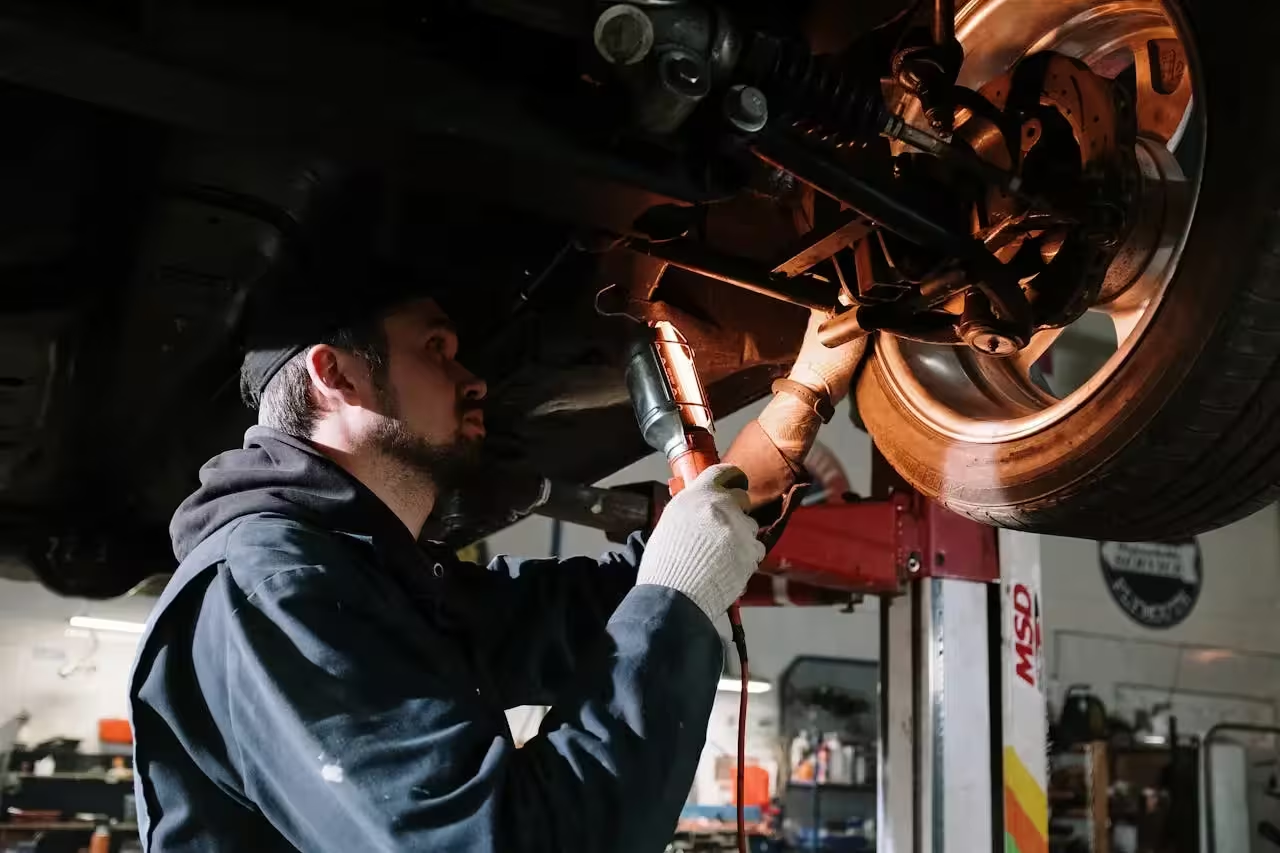September 19, 2025
TABLE OF CONTENTS
OUR Auto Repair Shop NEAR YOU
Mason Automotive in Bloomington, IN, offers quality auto repair with a convenient location and exceptional service.
Brakes are one of the most important safety systems in your car, but they’re also one of the easiest to overlook. Drivers often don’t think about them until they hear brakes squeaking, feel a vibration, or fail a brake and light inspection.
At Mason Automotive, we specialize in brake service that goes beyond “quick fixes.” Instead, we focus on long-term safety, premium parts, and a detailed process that ensures your car stops the way it should.
In this guide, we’ll answer the most common questions about brake care—including how long brake pads last, what squeaking really means, and how regular inspections protect both your car and your wallet.
The average lifespan of brake pads is 30,000 to 70,000 miles, but that range depends on several factors:
Rule of thumb: If you’ve driven 40,000 miles without a brake inspection, schedule one immediately. Waiting too long risks damaging rotors and increasing repair costs.

One of the most common signs of brake wear is squeaking or squealing. This sound often comes from:
If your brakes are squeaking, don’t ignore it. It’s usually your car’s way of asking for service before the issue gets worse.
Other shops may cut corners, but here’s how we do things differently:
When your brakes are squeaking or you’re due for a brake and light inspection, you can trust our team to handle the details.
A brake and light inspection is more than just a safety check—it’s often a requirement if you’re registering a used car, selling a vehicle, or recovering from an accident. During this inspection, technicians check:
At Mason Automotive, every brake service includes a thorough inspection. That way, you leave knowing your brakes aren’t just “good enough”—they’re safe and compliant.
Beyond squeaking, your vehicle may show other warning signs:
Shaking or vibration – Warped rotors cause pedal or steering wheel vibration.
Pulling to one side – Uneven brake pad wear or sticking calipers.
Burning smell or overheating – Rotors getting too hot under stress.
Dashboard warning light – A sign of low brake fluid or system issues.
Pads and rotors get all the attention, but your fluid and lubrication matter just as much:
Brake fluid flushes should be done every 3–4 years (36,000–48,000 miles). Moisture in the fluid reduces braking efficiency and corrodes expensive components like ABS modules.
Brake lubricant ensures quiet, even braking. We use a Moly-based product rated for over 2,000 degrees—cheap grease simply can’t compare.
Between 30,000 and 70,000 miles. Inspect every 40,000 miles to be safe.
Usually worn pads, dust buildup, or lack of proper lubrication.
Technicians check pad wear, rotor condition, fluid levels, lights, and safety systems.
Yes—every 3–4 years to prevent corrosion and maintain proper braking power.
Your brakes are too important to ignore. Understanding how long brake pads last, paying attention to brakes squeaking, and scheduling a brake and light inspection when needed will keep your vehicle safe and save you money in the long run.
At Mason Automotive, we combine premium parts, precision service, and trusted warranties to give you peace of mind every time you hit the road.
👉 Book your brake inspection today and stop safely tomorrow.